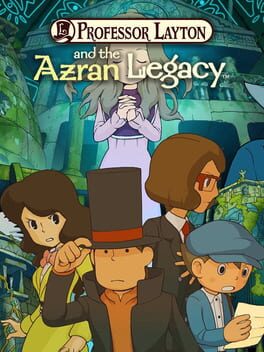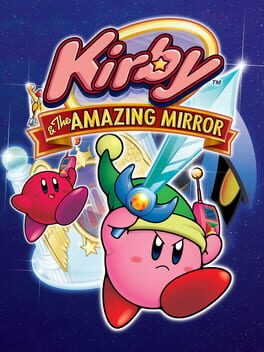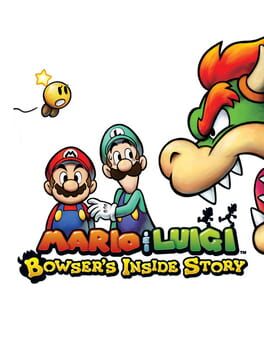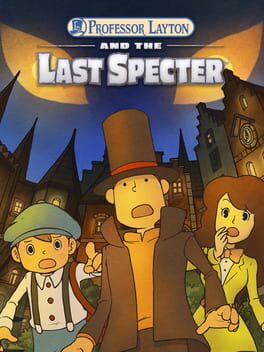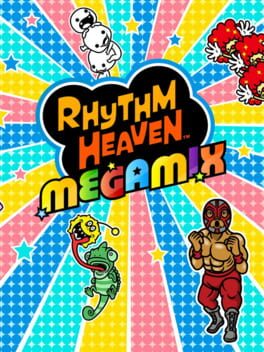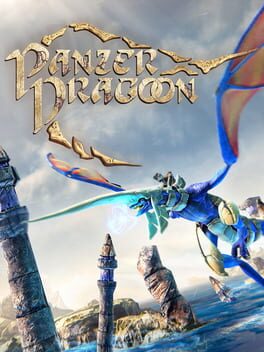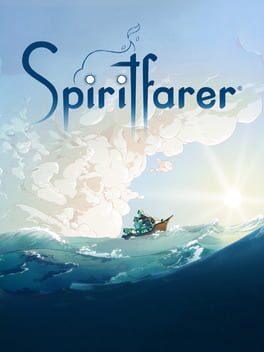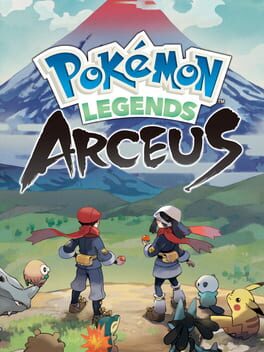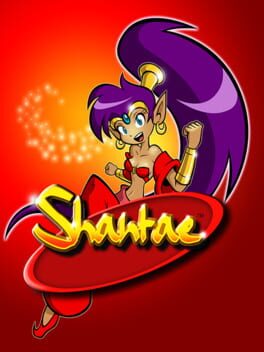Sarc
Refreshing after Miracle Mask left me with a sour taste in my mouth. Azran Legacy refines everything that Miracle Mask did extremely poorly. It has more interesting locations, a better overall mystery, better puzzles and the performance is significantly smoother. It's a bit more of a MacGuffin quest than most Professor Layton games, but I found myself having a good time with it. I might even say it's a little underrated.
Edit: I'll echo the sentiment that the mess of plot twists at the end is pretty bad. But outside of that I don't think the plot is too bad.
Edit: I'll echo the sentiment that the mess of plot twists at the end is pretty bad. But outside of that I don't think the plot is too bad.
It almost feels inevitable that the Professor Layton series would reach this point. Unfortunately, there's a pretty finite number of ways you can spin logic to create inventive puzzles. Miracle Mask runs thin on creative puzzles and feels like it's mostly recycling old formats. However, I can't really blame the game too much for that. For the most part, I still enjoyed solving the puzzles the game offers. The solutions are different even if the format is familiar. I also think that I enjoyed Miracle Mask's cast of characters more than The Last Specter. The game gets more personal with Layton's friendships and the sequences that take place in Layton's past lead to some pretty good character building moments. New characters like Dalston, Randall, Angela and Henry were pretty good additions. However, whilst the puzzle side remains intact I think the mystery element of Miracle Mask is particularly weak. I'll keep this spoiler free but the eventual big reveal is very predictable. The most climactic moment of the narrative has very little impact as a result. My final note is that the performance is very choppy. The transition to 3D models instead of sprites is definitely a rocky one. There were several moments where I experienced slowdown, which I feel took away from the gameplay experience. Overall, Professor Layton & The Miracle Mask does function as a puzzle game, but is far from the best the series has to offer.
It's unfortunate that Alpha Dream went under. Clearly, the Mario & Luigi series had a team of talented developers behind it. They made a successful formula with Superstar Saga and Partners In Time. Bowser's Inside Story feels quite inventive with the addition of playable Bowser in the overworld. This leads to a lot of gameplay interactions between Bowser and the Mario brothers who, weirdly enough, find themselves in Bowser's insides as the main premise of the game. This predicament is caused by the returning villain, Fawful, who completely steals the show in terms of character writing. I think that's a big reason why this series is so beloved. The characters have far more personality and charm than main series Mario entries, where Mario is still just a blank slate.
I think the gameplay of Bowser's Inside Story is a massive standout. It follows various RPG tropes like random encounters and usable items, but what it brings to the table cannot be understated. The game follows a unique combat system that gives the player a chance to avoid enemy attacks. If the player is able to remember the enemy patterns, they can be rewarded by dodging at the right time either by jumping or swinging their hammer. With this alone, the game has it's own feel. This feature is massive for player engagement because fights suddenly demand your attention. Also, enemies will often cue specific attacks with subtle actions. Learning these patterns is honestly very satisfying and goes a long way towards this game being fun and interesting. However, I can't help but feel that the game loses it's in this idea too easily. There is a lot of enemies to remember and having to be fully wired in to each fight can be a little overwhelming. Some of the boss fights feel especially unrelenting, as they can deal massive damage as a result of small mistakes. I'm not really sure where the balance is. The combat system overall is good, but not without flaws like this.
In conclusion, I think this game is good. It's a bit of a hidden gem from the DS era that I think would be worthwhile for RPG fans to check out. There's a lot of campaign to unpack and it brings some pretty good ideas to the table.
I think the gameplay of Bowser's Inside Story is a massive standout. It follows various RPG tropes like random encounters and usable items, but what it brings to the table cannot be understated. The game follows a unique combat system that gives the player a chance to avoid enemy attacks. If the player is able to remember the enemy patterns, they can be rewarded by dodging at the right time either by jumping or swinging their hammer. With this alone, the game has it's own feel. This feature is massive for player engagement because fights suddenly demand your attention. Also, enemies will often cue specific attacks with subtle actions. Learning these patterns is honestly very satisfying and goes a long way towards this game being fun and interesting. However, I can't help but feel that the game loses it's in this idea too easily. There is a lot of enemies to remember and having to be fully wired in to each fight can be a little overwhelming. Some of the boss fights feel especially unrelenting, as they can deal massive damage as a result of small mistakes. I'm not really sure where the balance is. The combat system overall is good, but not without flaws like this.
In conclusion, I think this game is good. It's a bit of a hidden gem from the DS era that I think would be worthwhile for RPG fans to check out. There's a lot of campaign to unpack and it brings some pretty good ideas to the table.
Professor Layton is a series that I have recently been able to rekindle a connection with. I put hours into the first four games as a kid and remember enjoying them. Now, thanks to my curiosity and a very legal 3DS setup, I am able to revisit them and aim to play them out in chronological order. That brings us to The Last Specter, the first game in the timeline. To be honest, I find this a difficult series to write about. The games simply aren't very game-y. Rather, the puzzles are more dependent on logic and problem solving rather than any game mechanics. Still, the puzzles do function as a means of progressing the mystery narrative. The mystery and the puzzles are essentially the most important parts of a Professor Layton game.
The narrative starts with Layton and Emmy making their way to Misthallery, investigating the presence of a monster at the request of the Mayor. You then quickly meet Luke for the first time (chronologically) who is a staple character for the series. These three are the backbone of the game's dialogue and overall act as a charming protagonist trio. I also enjoyed the supporting cast around them with newcomers like the Black Market gang and Arriana as well as recurring characters like Inspector Grosky. The mystery in Misthallery is a unique step for the series, being focused on a creature rather than a place or a specific object. I think the way the initial mystery transpires is quite smart and transitions well into the second mystery that the game holds.
Of course the game holds its own collection of puzzles. There is quite a good variety and I think the way this series has been able to bring new puzzles into the mix for so long is remarkable. Some of them will involve numbers, some involve shapes and patterns, some will be language oriented and some will pose a series of logic for the player to deconstruct. I think it is worth noting that these games can ramp up the difficulty, some of the puzzles are definitely head-scratchers. There are also, however, many puzzles that do not hold their weight. It seems that most games in the series has some puzzles with joke answers or ones that are laughably easy. The former feels a bit cheap, whilst the latter don't feel well thought out. Though I'm happy to report that these are a rarity and that the majority of puzzles will require some effort.
Overall, I find The Last Specter to be a solid addition to the series. It's not a standout by any means but through its sharp puzzles and narrative, it should have the ability to keep any puzzle game fans hooked for the playtime.
The narrative starts with Layton and Emmy making their way to Misthallery, investigating the presence of a monster at the request of the Mayor. You then quickly meet Luke for the first time (chronologically) who is a staple character for the series. These three are the backbone of the game's dialogue and overall act as a charming protagonist trio. I also enjoyed the supporting cast around them with newcomers like the Black Market gang and Arriana as well as recurring characters like Inspector Grosky. The mystery in Misthallery is a unique step for the series, being focused on a creature rather than a place or a specific object. I think the way the initial mystery transpires is quite smart and transitions well into the second mystery that the game holds.
Of course the game holds its own collection of puzzles. There is quite a good variety and I think the way this series has been able to bring new puzzles into the mix for so long is remarkable. Some of them will involve numbers, some involve shapes and patterns, some will be language oriented and some will pose a series of logic for the player to deconstruct. I think it is worth noting that these games can ramp up the difficulty, some of the puzzles are definitely head-scratchers. There are also, however, many puzzles that do not hold their weight. It seems that most games in the series has some puzzles with joke answers or ones that are laughably easy. The former feels a bit cheap, whilst the latter don't feel well thought out. Though I'm happy to report that these are a rarity and that the majority of puzzles will require some effort.
Overall, I find The Last Specter to be a solid addition to the series. It's not a standout by any means but through its sharp puzzles and narrative, it should have the ability to keep any puzzle game fans hooked for the playtime.
Kirby and the Forgotten Land was one of the most exciting reveals from the September 2021 Nintendo Direct. It marks the first true 3D platforming experience in main series Kirby games. For a series that was beginning to feel formulaic, I sensed that Forgotten Land would be what Kirby needed to regain some momentum.
The game feels quite reminiscent of Super Mario 3D World, as if they have lifted the 2D Kirby formula and applied it to the 3D platformer format. Periodic mini-bosses and challenge rooms are maintained and these are a great way to vary the pacing of each level. The mini-bosses also demonstrate the 3D combat well as the extra dimension creates opportunities for more creative attack patterns. Several bosses have spin attacks that send them around the entire arena, or attacks where they swing at you from afar. As a result I really enjoyed the boss fight portions of the game. However, Kirby's side of the combat feels emptier than previous 2D entries. The expansive set of attacks for several copy abilities have been removed, so I felt quite limited. In previous entries I enjoyed the array of attacks each ability had so I think it is a shame that they are not in Forgotten Land. Hopefully if another 3D entry is released, this is a new route they could take. On top of this, there are not many copy abilities in general. There are only 12 copy abilities, excluding the upgraded versions. The upgrades are a great addition though. I just found it somewhat boring to run into the same copy abilities over and over again. Although, I can appreciate that this might be because it is the first 3D game in the main series. Overall, I think it lays a great foundation for them to expand in the future.
The way the levels a structured feels like a natural progression between 2D and 3D and as such, Forgotten Land feels at home in the series. As is tradition, Forgotten Land introduces a new mechanic into Kirby's arsenal; Mouthful Mode. This allows Kirby to take a mouthful of specific objects and take control of them. I think this is a clever mechanic that creates platforming and level design implications that the series has never seen before. It feels like it got the right amount of screen time and adds a little more variety to the platforming and challenges. There is even a full level dedicated to the Car Mouth, as well as Treasure Road challenges for the rest. Achieving target times on Treasure Road stages was another good element of variety and specific Treasure Roads had a good level of difficulty to them. Furthermore there are plenty of minigames in the Hub World, Waddle Dee Town with plenty of rewards varying in significance. Last but not least, this game features a post-game that continues the main narrative and I think that's quite neat. I am excited for the future of the Kirby series and hope they continue experimenting. I think it mostly paid off this time.
The game feels quite reminiscent of Super Mario 3D World, as if they have lifted the 2D Kirby formula and applied it to the 3D platformer format. Periodic mini-bosses and challenge rooms are maintained and these are a great way to vary the pacing of each level. The mini-bosses also demonstrate the 3D combat well as the extra dimension creates opportunities for more creative attack patterns. Several bosses have spin attacks that send them around the entire arena, or attacks where they swing at you from afar. As a result I really enjoyed the boss fight portions of the game. However, Kirby's side of the combat feels emptier than previous 2D entries. The expansive set of attacks for several copy abilities have been removed, so I felt quite limited. In previous entries I enjoyed the array of attacks each ability had so I think it is a shame that they are not in Forgotten Land. Hopefully if another 3D entry is released, this is a new route they could take. On top of this, there are not many copy abilities in general. There are only 12 copy abilities, excluding the upgraded versions. The upgrades are a great addition though. I just found it somewhat boring to run into the same copy abilities over and over again. Although, I can appreciate that this might be because it is the first 3D game in the main series. Overall, I think it lays a great foundation for them to expand in the future.
The way the levels a structured feels like a natural progression between 2D and 3D and as such, Forgotten Land feels at home in the series. As is tradition, Forgotten Land introduces a new mechanic into Kirby's arsenal; Mouthful Mode. This allows Kirby to take a mouthful of specific objects and take control of them. I think this is a clever mechanic that creates platforming and level design implications that the series has never seen before. It feels like it got the right amount of screen time and adds a little more variety to the platforming and challenges. There is even a full level dedicated to the Car Mouth, as well as Treasure Road challenges for the rest. Achieving target times on Treasure Road stages was another good element of variety and specific Treasure Roads had a good level of difficulty to them. Furthermore there are plenty of minigames in the Hub World, Waddle Dee Town with plenty of rewards varying in significance. Last but not least, this game features a post-game that continues the main narrative and I think that's quite neat. I am excited for the future of the Kirby series and hope they continue experimenting. I think it mostly paid off this time.
Rhythm Heaven has been on my radar for a long time now, ever since the Chorus Kids were rumoured to be in Smash 4. That was all the way back in 2014 and somehow I only managed to pick up Rhythm Heaven in 2022. So I'm a bit late to the party with Megamix. Megamix is a collection of rhythm games from previous instalments in the series. Whilst I had not played a Rhythm Heaven game this year, I have seen Rhythm Heaven content before. I think the Super Smash Bros. version by 64 Bits is what really put it into my active memory.
Rhythm Heaven is not mechanically interesting. The game boils down to pressing a button at the right time. Yet, I found it entertaining throughout. I think what makes rhythm games interesting and unique is that rhythm is an external mechanic. You can develop a good sense of rhythm through other means. For example, if you play an instrument. Unlike other games, such as a platformer, I was able to start Rhythm Heaven Megamix with a good foundation, which made it easy to get into. Honestly, the simplicity of the mechanics is a benefit here. There's no worries about doing difficult inputs, you only need to learn the timing. I think this games works well on a casual and hardcore level. It's easy to pick up and play due to the short minigames and simple controls, as well as encouraging more dedicated players to beat their highscores. I lie somewhere in between. For most minigames I was more casual but for my favourite ones, I wanted to reach the highest score within my ability.
The most standout feature in Megamix is the presentation. Including the visuals, sound design and soundtrack. I appreciate the scenarios related to each minigame. The entire series does this and it creates a sense of directorial flare. Games like Air Rally, Lockstep and Flipper Flop stand out in this regard and it constantly feels like the game is having fun with itself. The visual and audio feedback you get from landing perfect notes or receiving a skill star are also a great touch. The game also makes use of many audio cues in places where the rhythm changes, like when Forthington shouts "bam bam bam bam" in Air Rally. These also compliment the incredible music that the game offers. Having good music can be a make or break for rhythm games. Not every song is a smash-hit, but I would say that the majority of songs are good, with a decent hand-full that are fantastic.
With the closure of the 3DS eshop approaching, I would implore anyone reading this to buy Rhythm Heaven Megamix. It's an incredibly polished rhythm game that is full of charm and once it's gone, it becomes more difficult to get your hands on. I hope I can find time to explore this series more in the future.
Rhythm Heaven is not mechanically interesting. The game boils down to pressing a button at the right time. Yet, I found it entertaining throughout. I think what makes rhythm games interesting and unique is that rhythm is an external mechanic. You can develop a good sense of rhythm through other means. For example, if you play an instrument. Unlike other games, such as a platformer, I was able to start Rhythm Heaven Megamix with a good foundation, which made it easy to get into. Honestly, the simplicity of the mechanics is a benefit here. There's no worries about doing difficult inputs, you only need to learn the timing. I think this games works well on a casual and hardcore level. It's easy to pick up and play due to the short minigames and simple controls, as well as encouraging more dedicated players to beat their highscores. I lie somewhere in between. For most minigames I was more casual but for my favourite ones, I wanted to reach the highest score within my ability.
The most standout feature in Megamix is the presentation. Including the visuals, sound design and soundtrack. I appreciate the scenarios related to each minigame. The entire series does this and it creates a sense of directorial flare. Games like Air Rally, Lockstep and Flipper Flop stand out in this regard and it constantly feels like the game is having fun with itself. The visual and audio feedback you get from landing perfect notes or receiving a skill star are also a great touch. The game also makes use of many audio cues in places where the rhythm changes, like when Forthington shouts "bam bam bam bam" in Air Rally. These also compliment the incredible music that the game offers. Having good music can be a make or break for rhythm games. Not every song is a smash-hit, but I would say that the majority of songs are good, with a decent hand-full that are fantastic.
With the closure of the 3DS eshop approaching, I would implore anyone reading this to buy Rhythm Heaven Megamix. It's an incredibly polished rhythm game that is full of charm and once it's gone, it becomes more difficult to get your hands on. I hope I can find time to explore this series more in the future.
1990
With respect to old games, it is not uncommon to deliberate how well the games hold up in the modern day. There are enough examples of classics that set the foundations, but were ultimately outdone by their successors.
However, Super Mario World (SMW) is different. The current state of 2D Mario makes it hard to believe that these games came from anything special. The "New Super Mario Bros." series is criticised frequently for a lack of creativity, so it was refreshing to play a game that is full of it. The majority of the levels feel unique. I think this is because there is much less adherence to an environmental theme. Even though areas of the map are distinct environments, they mix and match different level themes throughout each area. There are caves, grass levels, underwater levels and ghost houses in good balance. The levels feel fair, but offer their own individual difficulty curve. You start by learning the new mechanics and eventually reach one final big test where you put all of your skills on show. This level design philosophy is still used today and that is because it works. It is probably weird to say this, as someone born after SMW released, but it feels ahead of it's time. I noticed elements that I notice in a host of modern platformers and that makes the game feel truly special.
The game is also tremendously fun to play. Mario controls well and the new mechanics and powerups contribute towards creative and innovative level design. In my opinion, the cape feather is the star of the show. It would have been easier for Nintendo to just add it to a level and call it a day. However, they decided to create secret areas that are accessible via proficient use of the item. This gives the game an explorative quality which sets it apart even further from other 2D Mario instalments. I vividly remember the phase of the game where you have to find the "!" Blocks in each level and I think this will stick with me forever as one of the most unique parts of any Mario game.
This game surprised me. I've always heard it's good but I didn't quite expect to enjoy it as much as I did. I have played a decent amount of older games, but this one holds up the best. Definitely my favourite 2D Mario game and one of my favourite platformers. I fully recommend this to anyone who has access to Nintendo Switch Online, or for anyone who wants to emulate it.
However, Super Mario World (SMW) is different. The current state of 2D Mario makes it hard to believe that these games came from anything special. The "New Super Mario Bros." series is criticised frequently for a lack of creativity, so it was refreshing to play a game that is full of it. The majority of the levels feel unique. I think this is because there is much less adherence to an environmental theme. Even though areas of the map are distinct environments, they mix and match different level themes throughout each area. There are caves, grass levels, underwater levels and ghost houses in good balance. The levels feel fair, but offer their own individual difficulty curve. You start by learning the new mechanics and eventually reach one final big test where you put all of your skills on show. This level design philosophy is still used today and that is because it works. It is probably weird to say this, as someone born after SMW released, but it feels ahead of it's time. I noticed elements that I notice in a host of modern platformers and that makes the game feel truly special.
The game is also tremendously fun to play. Mario controls well and the new mechanics and powerups contribute towards creative and innovative level design. In my opinion, the cape feather is the star of the show. It would have been easier for Nintendo to just add it to a level and call it a day. However, they decided to create secret areas that are accessible via proficient use of the item. This gives the game an explorative quality which sets it apart even further from other 2D Mario instalments. I vividly remember the phase of the game where you have to find the "!" Blocks in each level and I think this will stick with me forever as one of the most unique parts of any Mario game.
This game surprised me. I've always heard it's good but I didn't quite expect to enjoy it as much as I did. I have played a decent amount of older games, but this one holds up the best. Definitely my favourite 2D Mario game and one of my favourite platformers. I fully recommend this to anyone who has access to Nintendo Switch Online, or for anyone who wants to emulate it.
Panzer Dragoon is a series I've known about by proxy since the release of Sonic and All-Stars Racing Transformed. I love it when classic games get a chance as a remake, even if I have no connection to the original. Additions to the back catalog of video games are important for the preservation of these classics, so I decided to support the effort here. Panzer Dragoon is an on-rail shooter where you destroy waves of enemies whilst moving through the level. The game emphasises the ability to turn the camera to the front, side and rear view as enemies can approach you from a variety of angles. I quite like this element, as it contributes to player engagement. To succeed, you have to keep track of the radar, to check if enemies are approaching from your blind spots. Quickly turning to the correct view and defending yourself is quite satisfying.
Initially, I was enjoying myself. However, as I progressed through the game I found certain parts grew frustrating. In my opinion, this remake lacks the sense of control and precision that a shooter needs. For example, the aiming reticle is not three-dimensional and this makes it quite difficult to aim from third person. If it had depth, it would be much easier to tell how far away incoming projectiles are. It also obscures the player because it lays on top of every on-screen element. It can sometimes be difficult to see due to this. This is made worse by the incessant bobbing motion the dragon makes, obscuring the players view even further. Even in side view, the wings will move in front of the viewport, taking up far too much space. Furthermore, I thought the aiming was imprecise in general. It often took me several attempts to align my reticle correctly. I also do not like how the aiming and movement is controlled by one stick. Trying to aim correctly would often cause me to move into enemy fire. However, I am unsure how the original functions, so I appreciate that this point might be more subjective.
Outside of the gameplay, I do not think the visuals reflect the source material well enough. Whist they are certainly more detailed and more appropriate for modern hardware, there are elements missing that would make the game look better. For example, on levels that take place over the ocean, there could be more reflections in the water. The cutscenes could also be improved massively. However, I do like the remastered soundtrack, which is definitely an improvement made from the original. In conclusion, I cannot recommend Panzer Dragoon: Remake. However, I know that more remakes are being considered. So I wish the best for those and hope that they can make improvements on this version. Notably, the subsequent editions to the original Panzer Dragoon series were received better than the original, so perhaps that will spark an improvement.
Initially, I was enjoying myself. However, as I progressed through the game I found certain parts grew frustrating. In my opinion, this remake lacks the sense of control and precision that a shooter needs. For example, the aiming reticle is not three-dimensional and this makes it quite difficult to aim from third person. If it had depth, it would be much easier to tell how far away incoming projectiles are. It also obscures the player because it lays on top of every on-screen element. It can sometimes be difficult to see due to this. This is made worse by the incessant bobbing motion the dragon makes, obscuring the players view even further. Even in side view, the wings will move in front of the viewport, taking up far too much space. Furthermore, I thought the aiming was imprecise in general. It often took me several attempts to align my reticle correctly. I also do not like how the aiming and movement is controlled by one stick. Trying to aim correctly would often cause me to move into enemy fire. However, I am unsure how the original functions, so I appreciate that this point might be more subjective.
Outside of the gameplay, I do not think the visuals reflect the source material well enough. Whist they are certainly more detailed and more appropriate for modern hardware, there are elements missing that would make the game look better. For example, on levels that take place over the ocean, there could be more reflections in the water. The cutscenes could also be improved massively. However, I do like the remastered soundtrack, which is definitely an improvement made from the original. In conclusion, I cannot recommend Panzer Dragoon: Remake. However, I know that more remakes are being considered. So I wish the best for those and hope that they can make improvements on this version. Notably, the subsequent editions to the original Panzer Dragoon series were received better than the original, so perhaps that will spark an improvement.
2020
Spiritfarer was a standout title in an Indie World presentation a while ago. There was a level of polish that made me sure to keep it on the radar, until I was able to pick it up at the end of 2020. Even at the point of purchase, I was not entirely certain what I was getting myself into. Luckily, I'm an advocate for trying out new genres. A management simulator with an open world seemed intriguing.
You take control of Stella, the new Spiritfarer who is tasked with caring for spirits until they ask to pass through the Everdoor. You traverse the world on a ship, which you can customise and upgrade whilst encountering new spirits along the way. It is instantly made clear that the spirit characters are what drive the game forward. They are all interpretations of Stella's friends, relatives and patients (Stella was formerly a nurse) and make for an incredibly charming set of characters. My main enjoyment from the game was derived from the stories these characters tell and how varied they are. The game becomes introspective, with the spirits explaining their outlook on life and reminiscing over the life they had. Spiritfarer is a game about character discovery, both for the player and for the characters themselves. Some have connections to other spirits on the boat, which served as a great way to add more emotional weight. Though naturally, the game is always emotional, dealing with the subject of life, death and the afterlife. The stories of the spirits are inherently sad but the resonating emotion is always warm, as they embrace Stella one final time before passing at the end of their journey. Spiritfarer carries endearing characters through mature stories without missing a beat, which earned it my fullest respect.
The peripherals that surround the main hook are also great. Your main tool is the Everlight, a glowing orb that can shape-shift to suit just about any task. Mainly it appears when collecting resources for your boat, such as wood, ore or crops. It makes an appearance in an engaging fishing minigame, or as oven-gloves in Stella's kitchen. It also encompasses some upgrades, which allow Stella to reach new areas further into the game. You can also buy boat upgrades to open up the map, which is also excellent. There are plenty of memorable locations and side characters, which vary by region. The world feels rich in charm as a result. To benefit this, the art direction is absolutely stellar. The set pieces, the lighting, the animation and the UI elements are all polished to a tee. Finally, the game has a wonderful soundtrack. I would not say that it is necessarily memorable, but I also disagree with the notion that soundtracks need to be memorable. The music works in the moment and that matters more to me.
If you have not got the memo yet, I think Spiritfarer is incredible. I have hid a number of details in this review to save a level of mystery. Still, I would wholly recommend this game to anyone who reads this. The fact that this game released from an independent studio is a massive success.
You take control of Stella, the new Spiritfarer who is tasked with caring for spirits until they ask to pass through the Everdoor. You traverse the world on a ship, which you can customise and upgrade whilst encountering new spirits along the way. It is instantly made clear that the spirit characters are what drive the game forward. They are all interpretations of Stella's friends, relatives and patients (Stella was formerly a nurse) and make for an incredibly charming set of characters. My main enjoyment from the game was derived from the stories these characters tell and how varied they are. The game becomes introspective, with the spirits explaining their outlook on life and reminiscing over the life they had. Spiritfarer is a game about character discovery, both for the player and for the characters themselves. Some have connections to other spirits on the boat, which served as a great way to add more emotional weight. Though naturally, the game is always emotional, dealing with the subject of life, death and the afterlife. The stories of the spirits are inherently sad but the resonating emotion is always warm, as they embrace Stella one final time before passing at the end of their journey. Spiritfarer carries endearing characters through mature stories without missing a beat, which earned it my fullest respect.
The peripherals that surround the main hook are also great. Your main tool is the Everlight, a glowing orb that can shape-shift to suit just about any task. Mainly it appears when collecting resources for your boat, such as wood, ore or crops. It makes an appearance in an engaging fishing minigame, or as oven-gloves in Stella's kitchen. It also encompasses some upgrades, which allow Stella to reach new areas further into the game. You can also buy boat upgrades to open up the map, which is also excellent. There are plenty of memorable locations and side characters, which vary by region. The world feels rich in charm as a result. To benefit this, the art direction is absolutely stellar. The set pieces, the lighting, the animation and the UI elements are all polished to a tee. Finally, the game has a wonderful soundtrack. I would not say that it is necessarily memorable, but I also disagree with the notion that soundtracks need to be memorable. The music works in the moment and that matters more to me.
If you have not got the memo yet, I think Spiritfarer is incredible. I have hid a number of details in this review to save a level of mystery. Still, I would wholly recommend this game to anyone who reads this. The fact that this game released from an independent studio is a massive success.
2019
Untitled Goose Game only just beats Triangle Strategy for the funniest video game title. The reveal trailer for this game was pretty wild, getting the collective reaction of "Is that actually the name?". The answer to which is yes. The title is an indicator for the novelty of this game, which never aims to take itself too seriously. The game reflects the human view on geese as troublemakers, which is an endearing idea that the game builds puzzles around.
The premise is entirely straightforward. You are given a to-do list of activities to progress through the world. All of them consist of annoying humans in some capacity. There is a good level of variety to the world, as you face different locations and different types of tasks. The solutions to puzzles are mostly well hidden and took some time to figure out, but never really hit their stride. Granted, I doubt the intent was to make this game particularly difficult. But the point remains, once you understand the humans well enough you can find success pretty easily. Likewise, the concept can only carry the game so far. The inherent silliness on display wears thin pretty quickly, the joke is not more than "you are an annoying goose". Once this quality wears off, you are left with an above average puzzle game where you happen to play as a goose.
If you buy Untitled Goose Game, I would highly recommend playing with a second player. Embrace the joke, have a laugh and it turns into something more fun. I think it's worth picking up for this, but I can't see myself replaying it any time soon. I'm glad I was able to experience it once though.
The premise is entirely straightforward. You are given a to-do list of activities to progress through the world. All of them consist of annoying humans in some capacity. There is a good level of variety to the world, as you face different locations and different types of tasks. The solutions to puzzles are mostly well hidden and took some time to figure out, but never really hit their stride. Granted, I doubt the intent was to make this game particularly difficult. But the point remains, once you understand the humans well enough you can find success pretty easily. Likewise, the concept can only carry the game so far. The inherent silliness on display wears thin pretty quickly, the joke is not more than "you are an annoying goose". Once this quality wears off, you are left with an above average puzzle game where you happen to play as a goose.
If you buy Untitled Goose Game, I would highly recommend playing with a second player. Embrace the joke, have a laugh and it turns into something more fun. I think it's worth picking up for this, but I can't see myself replaying it any time soon. I'm glad I was able to experience it once though.
Pokémon: Legends Arceus appeared to be an apprehensive release. Seemingly, many fans were concerned over Game Freak's ability to deliver yet another Pokémon game in such a short time. The initial trailers presented a game with plenty of graphical red flags so naturally, the fans voiced their concerns. However, there was also a hint of something new, which was enough to make me cautiously optimistic.
The early hours of the game are a decent introduction for the new mechanics and premise that Game Freak put into place. Whilst the Hisui region can seem familiar by comparisons to Sinnoh, the game leads with an uneasy atmosphere surrounding the relationship between people and Pokémon. This is the first time that any Pokémon living in Hisui is being documented and consequently, characters are shown as clueless or afraid. I think this is a good re-contextualisation of the dynamic between people and Pokémon, which also pairs well with the setting being an earlier portrayal of Sinnoh. The addition of real-time Pokémon catching (in the overworld) is a great development for the series. It creates a layer of immersion that previous entries lack by allowing the player to maintain full control of their character. Discovering the most effective ways to catch certain Pokémon by using items and the environment gives this game a uniqueness that I hope will carry over to future instalments. The final major change is the addition of Agile and Strong style moves in battle. For most of the game, I did not care so much for these options. Though in retrospect, I think this was a mistake. These moves are more useful than I let on, and I eventually realised this when I taught my Pokémon moves like Ice Shard and Aqua Jet, which move you up the turn order. Combining this with high-speed Pokémon allowed me to move several turns in a row, creating new strategies that the series has never seen before.
Since the game's reveal, it drew comparisons to other open world games. I think those comparisons are mostly valid. You cannot reach quite as far without having to return to the main objective, but you can certainly reach farther than in recent Pokémon games. It feels like the handholding has been somewhat taken away. These are much larger areas than we have ever experienced in the series, and I found excitement through discovery of new Pokémon, new areas and challenging encounters with Alpha and Noble Pokémon.
However, the areas feel quite empty. A number of recognisable locations from Sinnoh are present, but they don't usually consist of more than a room. For example, Solaceon Ruins or Turnback Cave could have drawn more parallel's to their portrayal in Diamond, Pearl and Platinum (DPP). They were confusing labyrinths with puzzle solving elements. Seeing both reduced to a simple room reduces the charm, especially during the post-game hunt for Giratina. I think that including more NPCs, structures and dungeons in the world would have contributed to making the content of the game more varied. Another major critique comes quite clearly with the graphics. I'm not usually one to harp on about graphics, but I feel they are important in this case. The game suffers from poor draw distance, low resolution textures and dull lighting. Additionally, Pokémon outside of a certain proximity will animate at a lower frame rate. Though at the same time, the animation has been generally improved. Pokémon turn and move realistically now, as well as making contact with their opponent during battles. They investigate things, they move spontaneously and you might even catch them sleeping. With respect to the Pokémon, the overworld feels alive and I appreciate that massively.
In summary, Pokémon: Legends Arceus comes as a worthwhile addition to the series. If you are more a fan of battling, it may take some getting used to. There aren't many, but certain ones are relatively challenging. This game goes back to the essence of Pokémon, which is to find as many as you can, if not all. It's difficult to fully pin a genre onto it, but I suppose that's because it's not generic. It's an adventure with RPG elements and the added feel of a collectathon. I'm glad Game Freak are becoming more willing to try new things with their major Pokémon releases and whilst it certainly isn't perfect, I can recommend it to fans of the series who have been eager for something new.
The early hours of the game are a decent introduction for the new mechanics and premise that Game Freak put into place. Whilst the Hisui region can seem familiar by comparisons to Sinnoh, the game leads with an uneasy atmosphere surrounding the relationship between people and Pokémon. This is the first time that any Pokémon living in Hisui is being documented and consequently, characters are shown as clueless or afraid. I think this is a good re-contextualisation of the dynamic between people and Pokémon, which also pairs well with the setting being an earlier portrayal of Sinnoh. The addition of real-time Pokémon catching (in the overworld) is a great development for the series. It creates a layer of immersion that previous entries lack by allowing the player to maintain full control of their character. Discovering the most effective ways to catch certain Pokémon by using items and the environment gives this game a uniqueness that I hope will carry over to future instalments. The final major change is the addition of Agile and Strong style moves in battle. For most of the game, I did not care so much for these options. Though in retrospect, I think this was a mistake. These moves are more useful than I let on, and I eventually realised this when I taught my Pokémon moves like Ice Shard and Aqua Jet, which move you up the turn order. Combining this with high-speed Pokémon allowed me to move several turns in a row, creating new strategies that the series has never seen before.
Since the game's reveal, it drew comparisons to other open world games. I think those comparisons are mostly valid. You cannot reach quite as far without having to return to the main objective, but you can certainly reach farther than in recent Pokémon games. It feels like the handholding has been somewhat taken away. These are much larger areas than we have ever experienced in the series, and I found excitement through discovery of new Pokémon, new areas and challenging encounters with Alpha and Noble Pokémon.
However, the areas feel quite empty. A number of recognisable locations from Sinnoh are present, but they don't usually consist of more than a room. For example, Solaceon Ruins or Turnback Cave could have drawn more parallel's to their portrayal in Diamond, Pearl and Platinum (DPP). They were confusing labyrinths with puzzle solving elements. Seeing both reduced to a simple room reduces the charm, especially during the post-game hunt for Giratina. I think that including more NPCs, structures and dungeons in the world would have contributed to making the content of the game more varied. Another major critique comes quite clearly with the graphics. I'm not usually one to harp on about graphics, but I feel they are important in this case. The game suffers from poor draw distance, low resolution textures and dull lighting. Additionally, Pokémon outside of a certain proximity will animate at a lower frame rate. Though at the same time, the animation has been generally improved. Pokémon turn and move realistically now, as well as making contact with their opponent during battles. They investigate things, they move spontaneously and you might even catch them sleeping. With respect to the Pokémon, the overworld feels alive and I appreciate that massively.
In summary, Pokémon: Legends Arceus comes as a worthwhile addition to the series. If you are more a fan of battling, it may take some getting used to. There aren't many, but certain ones are relatively challenging. This game goes back to the essence of Pokémon, which is to find as many as you can, if not all. It's difficult to fully pin a genre onto it, but I suppose that's because it's not generic. It's an adventure with RPG elements and the added feel of a collectathon. I'm glad Game Freak are becoming more willing to try new things with their major Pokémon releases and whilst it certainly isn't perfect, I can recommend it to fans of the series who have been eager for something new.
2002
